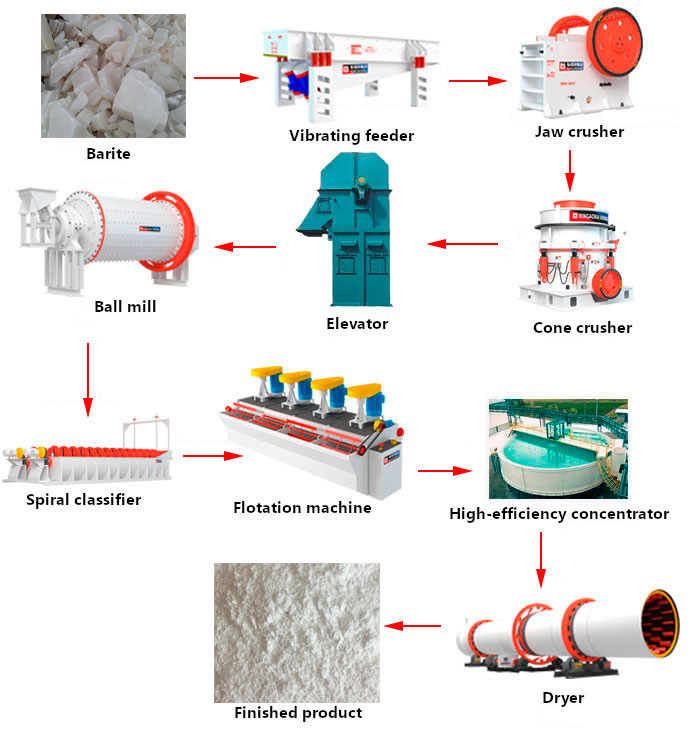
Barite is a non-metallic mineral product with barium sulfate as the main component, often coexisting with galena, sphalerite, chalcopyrite, cinnabar, etc. It can also be produced in sedimentary rocks, appearing in the form of nodules, mostly in sedimentary manganese deposits and muddy and sandy sedimentary rocks in shallow seas. In the residual clay cover layer of weathered residual deposits, it often forms nodules and blocks. Barite is a non-renewable resource and is widely used as a weighting agent for oil and natural gas drilling mud. Its consumption in the fields of barium chemicals and fillers is also increasing year by year. It can be used as a contrast agent in the digestive system in medicine. China has quite rich barite resources, ranking first in the world.
Crushing and screening stage
The crushing process uses a jaw crusher to crush the large pieces of barite mined; the screening process uses a circular vibrating screen with large processing capacity, high screening efficiency, and is simple and practical. This type of vibrating screen has a low failure rate, large processing capacity, high screening efficiency, and is easy to operate. It is an ideal equipment for barite ore screening; the jigging and sorting process uses two types of jigging machines to jig and sort the coarse and fine particle barite materials after crushing.
Gravity separation stage
The usual practice for barite gravity separation is crushing and screening. After the jigging and sorting process, a high-grade concentrate is obtained, and the product grade can reach more than 80%. Jigging machines are used as the main equipment for sorting and purifying barite ores. It has the characteristics of energy saving, high efficiency, environmental protection, etc., and has high economic benefits.
Magnetic separation stage
Wet magnetic separators are usually used to select some iron-containing minerals such as siderite, which are used as barite raw materials for barium-based medicines that require very low iron content.
Flotation stage
Floatation is often used to separate finely embedded barite ores and their gravity tailings. Depending on the adsorption method, anionic collectors such as fatty acid alkyl sulfates and alkyl sulfonates or cationic amine collectors are used to float barite ores.
